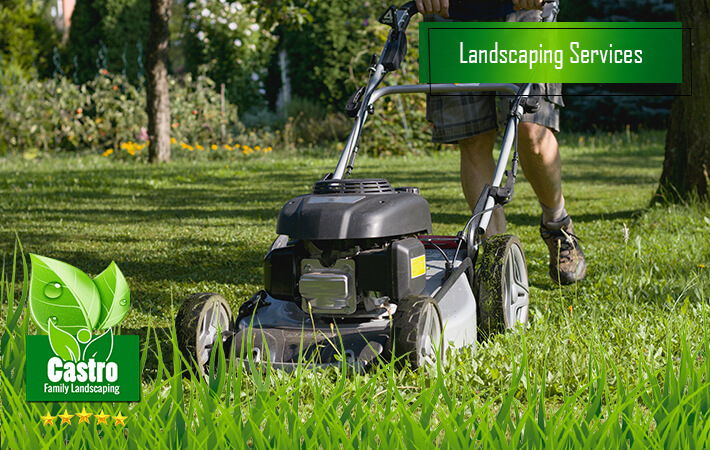Integrating Visual Appeal and Practicality in Landscape Architecture

Creating a captivating landscape is a careful combination between aesthetic appeal and practicality. While the beauty of your garden often holds the greatest attention, the underlying function and practical use are just as important. A well-designed landscape should also be beautiful but also cater to the requirements of its residents, whether they are homeowners seeking peace, families looking for fun, or nature lovers wanting to attract local wildlife. Finding this harmony is the key to a successful landscape design that enhances the overall well-being.
As we examine the myriad of options and concepts in landscape design, it becomes apparent that t here are many ways to transform any outdoor space into a gorgeous haven. From contemporary to traditional styles, and from simple DIY projects to hiring the expertise of a professional, the options are limitless. In this piece, we will delve into essential tips and inspiration for designing a landscape that marries beauty and practicality, ensuring your outdoor space serves as an inviting retreat while meeting your specific lifestyle needs.
Leading Landscape Styling Styles
As we look towards the horizon of landscape styling, several movements are surfacing that focus on a equilibrium between visual appeal and practicality. One significant trend is the incorporation of eco-friendly methods, such as the use of indigenous greenery and eco-friendly supplies. Property owners are more and more aware of their environmental impact, driving them to those choices that are not only aesthetically pleasing but also sustain local ecosystems. This attention on sustainability is beyond related to plant picking; it broadens to adopting water-efficient solutions and establishing homes for regional animals.
An additional style is the emergence of outdoor dwelling environments that serve as an extension of the house. Designs that include components like arbors, al fresco cooking areas, and cozy fire pits are becoming more popular. These features allow households to appreciate their yards as functional al fresco rooms, boosting both the practicality and visual appeal of their homes. Additionally, incorporating lighting features into yard layouts is growing momentum. Well-placed illumination can convert outdoor spaces into inviting settings for relaxation and gatherings, boosting their aesthetic and practicality after sunset.
Finally, Spartan design is making its way into garden design. Property owners are choosing for neat forms, open areas, and simple upkeep flora that offer a big impression without overwhelming the mind. This movement aligns with the expanding preference for clean, peaceful environments, allowing the aesthetics to stand out through. As additional individuals adopt simplicity, garden plans are turning into a canvas for refined grace rather than chaotic decoration, illustrating how simplicity can be greater in designing breathtaking outdoor environments.
Key Decor Advice for All Area
Creating a gorgeous landscape commences with grasping the distinct traits of your external space. Take into account the size, layout, and terrain of your land. For compact spaces, use vertical gardening approaches and stacked plantings to enhance visual effect to prevent congestion. For larger yards, dividing different spaces for multiple activities can assist establish focal points while ensuring practicality. Each area has its own possibilities; utilize it by choosing styling concepts that showcase its advantages.
The selection of substances is vital in landscape design. No matter if you choose hard materials like patios, walkways, or barriers, make sure they harmonize with the organic setting and the architecture of your residence. Eco-friendly materials merely contribute to aesthetics but also ensure durability and lessen ecological footprint. Blend different surfaces and shades to achieve balance, regardless of whether you are including rock, lumber, or aluminum into your design.
Finally, always remember the value of illumination in your external space. Careful arrangement of lighting fixtures can enhance walkways, highlight key aspects, and establish a inviting ambiance. Integrating LED lights offers energy savings but also durability. Utilizing lighting that enhances the entire concept can enhance environments at dusk, forming an inviting and practical outdoor space that is at once practical and optically pleasing.
Sustainable and Sustainable Methods
Integrating eco-friendly plus environmentally-conscious methods within garden design not only helps the ecosystem and also improves the complete well-being of your external area. A great method to accomplish this is by utilizing native plants that are well adapted to the local climate and earth types. Indigenous species need less irrigation plus care compared to non-native species, providing a environment for local wildlife and promoting biodiversity. This method corresponds with the principles of sustainable landscape design, making it a key consideration for any property owner aiming to create a sustainable landscape.
Additionally, a crucial method is the implementation of smart irrigation systems. Techniques such as drip irrigation minimize water usage by delivering water directly to plant roots, allowing for accurate management over moisture levels. Additionally, employing rainwater catchment systems to gather and save rainwater can significantly lessen reliance on municipal water systems, encouraging a more eco-friendly outdoor environment. These techniques also conserve moisture and can also result in reduced costs, making them an appealing choice for budget-conscious homeowners.
In conclusion, including hardscaping elements, such as permeable surfaces and xeriscaping, can further improve eco-friendliness in landscape designs. Permeable surfaces enable rainwater to absorb the ground, decreasing water runoff and lessening the likelihood of waterlogging. Xeriscaping centers around water-efficient plants and design techniques that lower the need for watering. By integrating these practices, you can design a beautiful landscape that is not only aesthetically pleasing but also eco-conscious, ensuring a lovely area that corresponds with sustainable values.

